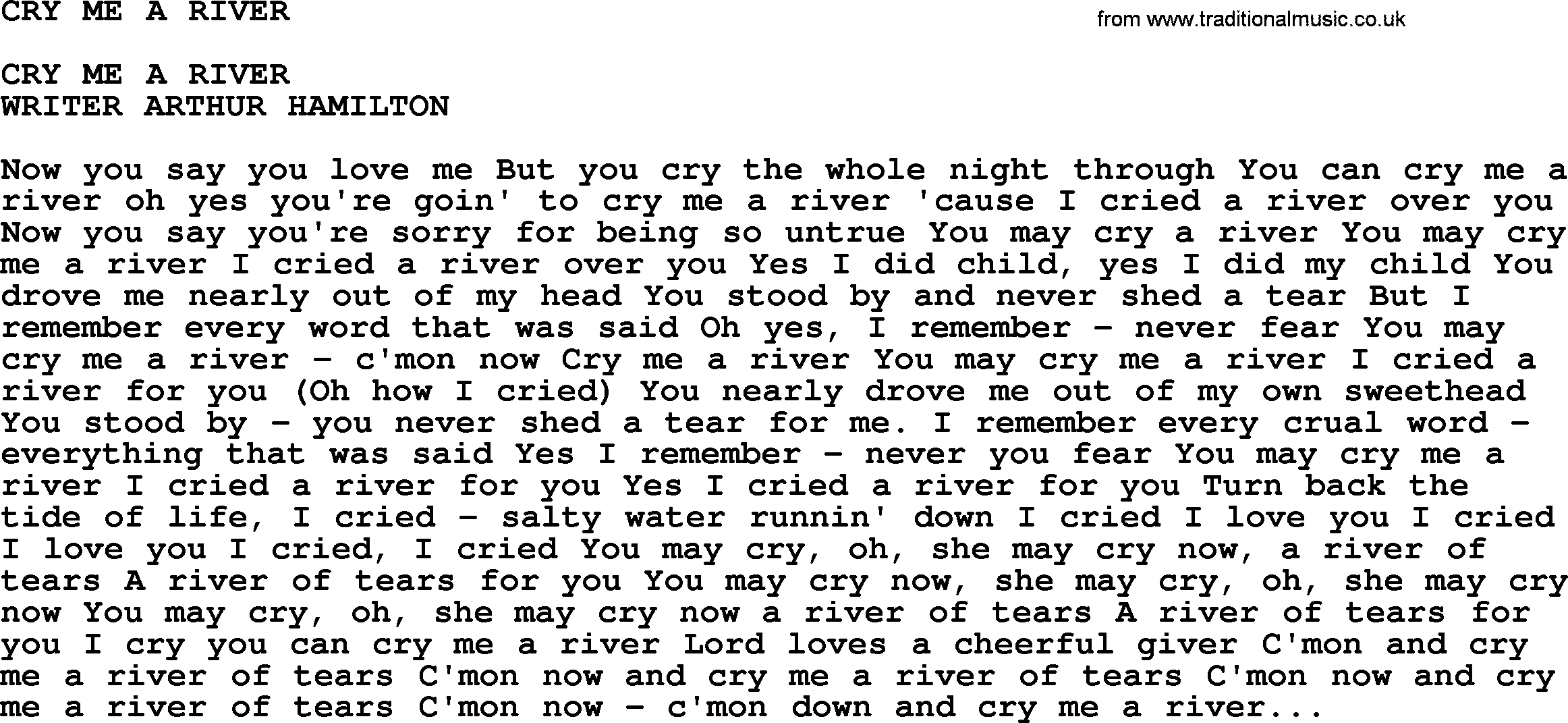Cry Me a River Chapter 9 delves into the intricate tapestry of Raina’s character, unraveling her motivations and relationships while exploring profound themes and employing evocative literary devices.
The chapter weaves a compelling narrative, delving into the depths of Raina’s choices and actions, shedding light on their significance and impact on the overall narrative.
Character Analysis

Raina is a complex and enigmatic character. She is a beautiful, intelligent, and talented young woman, but she is also deeply troubled. She has a troubled past, and she has been through a lot of trauma. As a result, she has a lot of emotional baggage, and she often struggles to cope with her emotions.
Raina is a very independent woman. She is not afraid to speak her mind, and she is not afraid to stand up for herself. She is also very loyal to her friends and family. However, she can also be very stubborn and impulsive. She often makes decisions without thinking them through, and she can be very reckless. This can lead to her getting into trouble.
Cry me a river chapter 9 unveils a torrent of emotions as the protagonist grapples with heartbreak. Yet, amidst the tears, a glimmer of hope emerges. The perfect luna chapter 85 offers a poignant reminder that love can blossom in the most unexpected places.
As we delve deeper into cry me a river chapter 9, we witness the resilience of the human spirit as the protagonist finds solace in the strength of friendship.
Motivations
Raina’s motivations are complex. She is driven by a desire for love and acceptance, but she is also afraid of being hurt. She wants to be independent, but she also needs to feel loved and supported. This inner conflict often leads her to make bad decisions.
Cry Me a River Chapter 9 is full of twists and turns that will leave you on the edge of your seat. If you’re looking for more gripping content, check out Ruthless GL Chapter 22 here . It’s a captivating read that will have you hooked from start to finish.
But don’t forget to come back and finish Cry Me a River Chapter 9, as it’s a thrilling story that will stay with you long after you’ve finished reading.
Relationships
Raina has a complex relationship with her family. She loves her parents, but she also resents them for the way they treated her when she was growing up. She has a close relationship with her sister, but she also feels competitive with her. She has a few close friends, but she often feels like she is on the outside looking in.
Significance
Raina is a significant character because she represents the many young people who are struggling to find their place in the world. She is a reminder that even the most beautiful and talented people can have deep emotional scars. She is also a reminder that it is possible to overcome adversity and find happiness.
Theme Exploration

Chapter 9 of Cry Me a River delves into profound themes that shape the narrative and resonate with readers on a deeply personal level.
One central theme is the exploration of grief and loss. The protagonist, Cecelia, grapples with the devastating aftermath of her father’s death, navigating the labyrinthine emotions of sorrow, guilt, and longing. Through her journey, the novel illuminates the raw and universal experience of loss, highlighting its transformative power and the resilience of the human spirit.
The Fragility of Human Connections
The novel also explores the fragility of human connections. Cecelia’s relationships with her mother and best friend are strained by grief, revealing the delicate nature of bonds that can be tested by adversity. Through these strained relationships, the novel delves into the complexities of love, loyalty, and forgiveness, examining the ways in which loss can both strengthen and fracture human connections.
The Power of Memory and the Search for Identity
Memory plays a pivotal role in Chapter 9, as Cecelia struggles to reconcile her memories of her father with the reality of his absence. The novel explores the power of memory to shape our identities and the ways in which it can both comfort and torment us. Cecelia’s journey highlights the importance of embracing the past while forging a path forward, finding strength in the memories of loved ones who have passed.
The Importance of Closure and Healing
Closure and healing are essential themes in Chapter 9. Cecelia’s grief is compounded by the lack of closure surrounding her father’s death, leaving her feeling lost and adrift. The novel explores the importance of finding closure and the healing power of time, forgiveness, and acceptance. Through Cecelia’s journey, the novel emphasizes the necessity of confronting our pain and allowing ourselves to heal, in order to move forward and find peace.
Cry Me a River Chapter 9: An intimate and heart-wrenching account of the author’s personal struggles, this chapter explores the complexities of addiction and recovery. As we journey through the author’s experiences, we are reminded of the matthew perry book last chapter , which also delves into the challenges of addiction and the power of redemption.
Cry Me a River Chapter 9 leaves us with a profound sense of hope and resilience, inspiring us to face our own struggles with courage and determination.
Literary Devices: Cry Me A River Chapter 9

Chapter 9 of Cry Me a River is a powerful and emotionally charged chapter that employs a variety of literary devices to create a vivid and immersive atmosphere. These devices contribute to the chapter’s mood, tone, and overall impact, enhancing the reader’s experience and understanding of the characters and events.
Imagery
Imagery is a key literary device used throughout Chapter 9. The author uses vivid and evocative language to create a rich sensory experience for the reader. For example, the description of the “cold, hard floor” and the “musty smell of the basement” evokes a sense of discomfort and unease, while the image of the “bright, sunny day” outside contrasts with the darkness and despair of the basement.
Metaphor
Metaphors are also used effectively in Chapter 9. The author compares the protagonist’s feelings of isolation and loneliness to being “trapped in a cage,” and describes the way her memories “haunt” her like “ghosts.” These metaphors create a powerful emotional impact, allowing the reader to viscerally experience the protagonist’s inner turmoil.
Foreshadowing
Foreshadowing is another important literary device used in Chapter 9. The author hints at future events through subtle clues and suggestions. For example, the mention of the “dark shadows” that seem to follow the protagonist foreshadows the dangers that lie ahead. These foreshadowing elements create a sense of suspense and anticipation, keeping the reader engaged and eager to learn what will happen next.
Symbolism and Imagery

Chapter 9 of “Cry Me a River” is replete with powerful symbols and vivid imagery that contribute significantly to its overall meaning and emotional impact. These elements serve to enhance the reader’s understanding of the characters, their motivations, and the complexities of their relationships.
One of the most prominent symbols in the chapter is the river itself. The river represents the passage of time and the inexorable flow of life. It also symbolizes the protagonist’s emotional journey as she navigates the challenges and heartaches of her relationship. The river’s constant motion and its ever-changing appearance mirror the protagonist’s own fluctuating emotions and the evolving nature of her situation.
Another significant symbol in the chapter is the color red. Red is often associated with passion, love, and anger. In this chapter, the color red is used to symbolize the intensity of the protagonist’s emotions. It is present in the descriptions of her flushed cheeks, her crimson lipstick, and the blood that stains her hands. The use of red highlights the raw and visceral nature of her experiences and the depth of her pain.
The imagery in Chapter 9 is equally evocative. The author uses vivid and sensory language to create a rich and immersive experience for the reader. The descriptions of the protagonist’s surroundings, her physical sensations, and her emotional state are all rendered in exquisite detail. This imagery serves to heighten the reader’s emotional connection to the protagonist and to make her journey more relatable and impactful.
Symbol of Water
Water is a recurring symbol throughout the chapter, appearing in various forms such as rain, tears, and the river. It represents the protagonist’s emotional state and the fluidity of her experiences. The rain symbolizes her sorrow and the tears she sheds, while the river represents the passage of time and the relentless flow of life. The water imagery creates a sense of fluidity and movement, reflecting the protagonist’s evolving emotions and the changing circumstances she faces.
Symbol of Red, Cry me a river chapter 9
The color red is used extensively in the chapter, particularly in association with the protagonist’s emotions. It symbolizes passion, anger, and the intensity of her feelings. The red lipstick she wears represents her attempt to mask her pain, while the blood on her hands signifies the consequences of her actions. The use of red imagery emphasizes the rawness and volatility of the protagonist’s emotions, highlighting the depth of her suffering.
Imagery of Nature
The chapter is rich in imagery drawn from nature, including descriptions of the river, the rain, and the surrounding landscape. These elements create a vivid and immersive setting that reflects the protagonist’s inner turmoil. The river’s constant flow mirrors her own emotional journey, while the rain represents her tears and the cleansing power of nature. The natural imagery serves to connect the protagonist’s experiences to the wider world, suggesting that her pain is a universal human experience.
End of Discussion

Chapter 9 of Cry Me a River stands as a testament to the power of storytelling, deftly weaving together character analysis, theme exploration, and literary devices to create a captivating and thought-provoking reading experience.